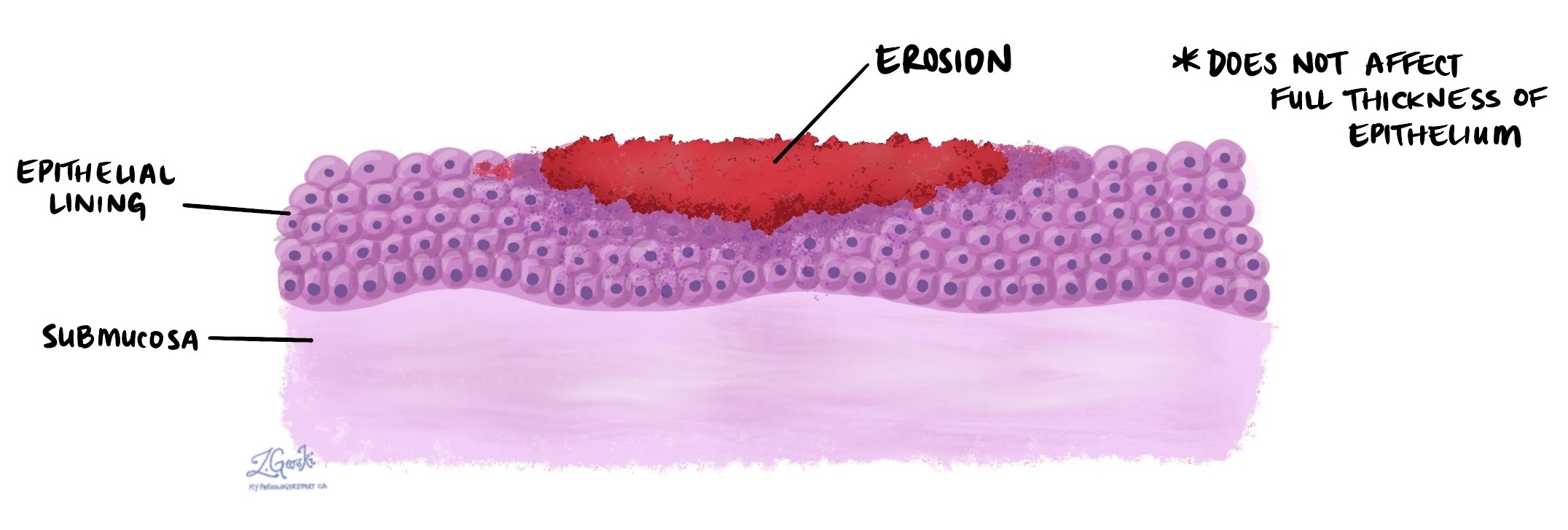
In pathology, erosion refers to the superficial loss of epithelial tissue, specifically the epithelium that covers the surfaces or lines the cavities of organs. Unlike ulcers, erosions do not extend into the underlying submucosa or subcutaneous tissues; they are confined to the loss of the epithelial layer only. This distinction is crucial for understanding the severity and potential implications of the lesion.
Common sites and causes of erosions
Erosions can occur on any surface covered by epithelium, including the skin, gastrointestinal tract, and mucous membranes.
Common causes include:
- Physical trauma: Abrasions or friction injuries that scrape off the epithelial surface.
- Chemical irritation: Exposure to irritants or caustic substances.
- Inflammatory diseases: Conditions such as dermatitis, inflammatory bowel disease, or certain types of gastritis can lead to erosions.
- Infections: Bacterial, viral, or fungal infections that damage the epithelial cells.
Clinical significance of erosions
The clinical significance of erosions varies depending on their location, size, and underlying cause. In the gastrointestinal tract, for example, erosions may contribute to symptoms such as bleeding or pain. On the skin, erosions can lead to discomfort and an increased risk of infection. In mucous membranes, such as those lining the mouth or genital area, erosions can be painful and interfere with daily activities.
Healing of Erosions
Erosions tend to heal more readily than ulcers because they do not involve the deeper layers of tissue. Healing typically occurs through re-epithelialization, where new epithelial cells grow over the defect. Complete healing usually results in minimal to no scarring, given that the damage was superficial. However, the healing process and potential for recurrence can be influenced by the underlying cause of the erosion and the overall health of the epithelial tissue.
About this article
Doctors wrote this article to help you read and understand your pathology report. Contact us if you have questions about this article or your pathology report. For a complete introduction to your pathology report, read this article.



